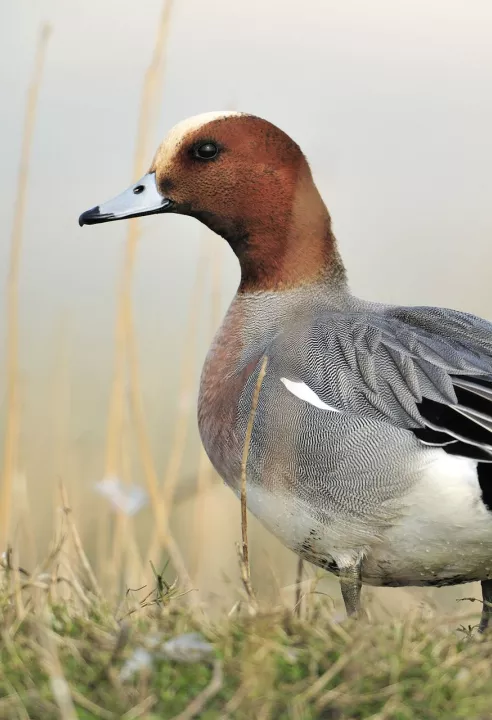Poldercomplex

In the Polder Complex area we find the area 'De Uitkerkse Polder'. This area owes its international fame to birds. Birds settle here all year round to catch their breath after their long migrations. From November 15 to February 15 it is goose season and you can observe all kinds of geese in the Uitkerkse Polder, such as pink-footed goose, gray goose and white-fronted goose. Tens of thousands of pink-footed geese, a large part of the Spitsbergen population, spend the darkest part of the winter in the coastal polders. Together with the other ducks and geese, the birds sometimes form a group of more than a hundred thousand water birds. A spectacle without equal!
Species such as wigeon are umbrella species for other meadow birds and waders such as lapwing, redshank, oystercatcher, golden plover and bar-tailed godwit. These beautiful, whistling ducks are often busy preening their plumage. After all, they rest during the day and graze at night. A winter sun makes their yellow foreheads stand out.
Meadow birds are in abundance in April and May. You can spot the ruff, redshank and oystercatcher, among others. The Uitkerke Polder was the last breeding ground in Belgium for the ruff, they came to breed there until 1969. During migration and especially in winter, the ruff occurs in high numbers in the polders, the Blankaart and De Bourgoyen.
The importance of the Uitkerkse Polder is great for species such as redshank and avocet, because these species in Flanders mainly breed in biotopes that will disappear in the short term. In addition to the remarkable expansion of critical meadow birds, targeted nature management can also provide a long-term guarantee for the conservation of these species in Flanders.
Thanks to the brackish water from the peat, ditches and groundwater, unique plants can be found here. Milkweed and samphire often grow on mud flats and shoals, but in the Uitkerkse Polder you will find them inside the dike. A rarity in Europe. Samphire seed needs fresh water to germinate. Rain showers in early spring ensure this. As soon as the plant germinates, it actively absorbs salt.
Every year a number of short-eared owls hibernate in the Uitkerkse Polder. The polders are a copy of the open breeding areas of the short-eared owls further north. They usually hunt in the morning or at dusk. It is not easy to spot a short-eared owl. Just try!
Click here for more information about Uitkerkse Polder in the 'Poldercomplex' area!
Click here to go to the Bioblitz page of this Natura 2000 area.
Click here to install Obsidentify.
Photo: Yves Adams (Vilda)
